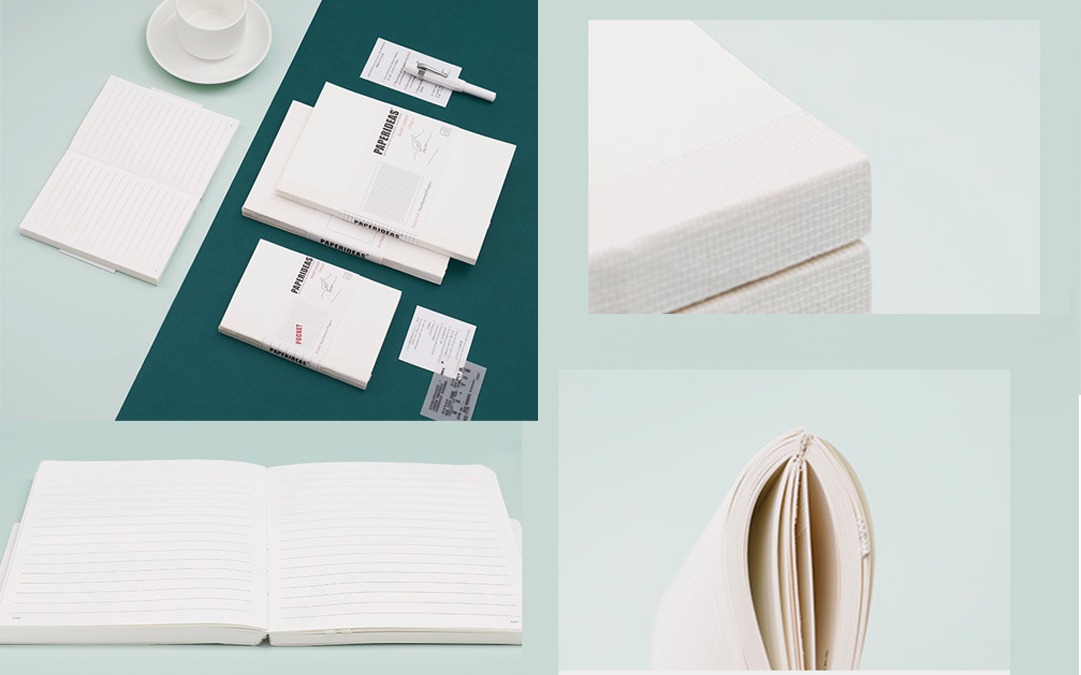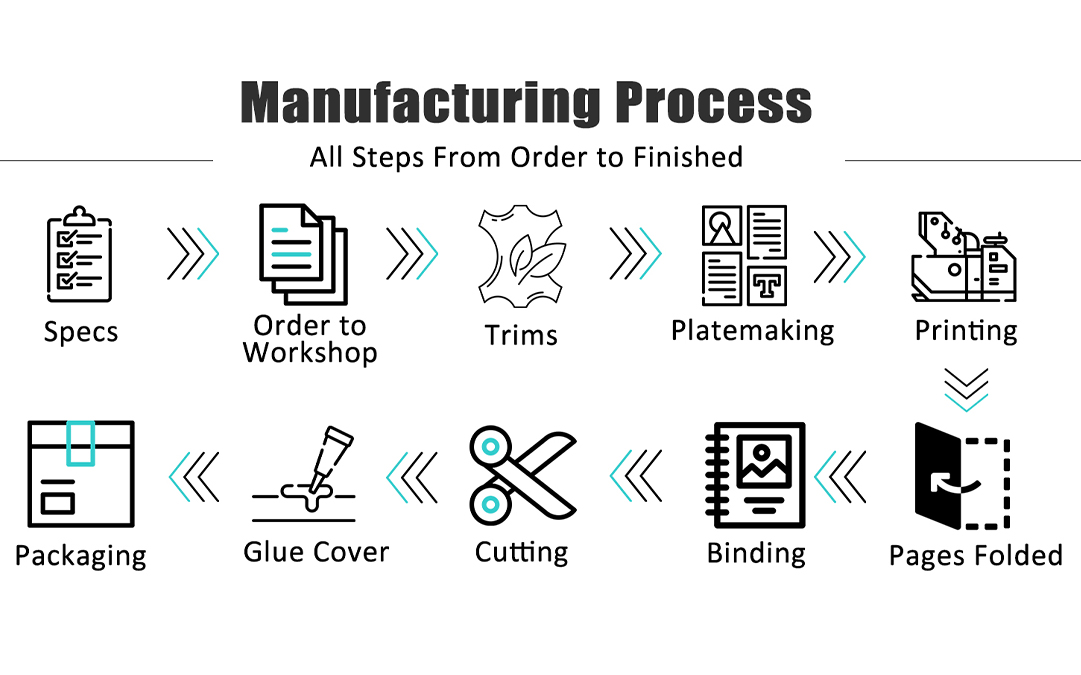How Can I Effectively Communicate My Design Vision to the Notebook Printing Team?
As a professional in the notebook printing industry, I understand how crucial it is to convey my design vision accurately to team. Clear communication can mean the difference between a stunning final product and a disappointing one. Here are ten essential strategies I use to ensure my design vision is effectively communicated to the printing team.
Clarify Your Notebook Printing Vision Early On
From the moment I embark on a new project, I prioritize clarifying my design vision. This involves taking the time to define the core concept, overall style, and specific details I want to see in the final product. By doing this early on, I ensure that I have a clear and concise idea of my expectations, which simplifies communication with the printing team. This early clarification helps avoid misunderstandings and sets a solid foundation for the entire process. When everyone is on the same page from the start, the likelihood of achieving the desired outcome increases significantly.
Create Notebook Printing Detailed Design Briefs
A comprehensive design brief is indispensable for effective communication. I make sure to create detailed briefs that encompass all the necessary information, such as color schemes, typography, imagery, and layout preferences. Additionally, I include any references or inspiration that align with my vision. By providing a well-structured design brief, I ensure that the printing team has a clear understanding of my expectations and the specific elements I want to incorporate. This not only saves time but also minimizes the risk of errors and misinterpretations.
Use Visual Aids and Mockups
Visual aids such as sketches, mockups, and digital previews are invaluable for conveying my design ideas. I often use tools like Adobe Illustrator or Photoshop to create detailed mockups that showcase exactly how I envision the final product. These visual aids help the printing team to see my vision more clearly, reducing the chances of misinterpretation. When the team can visualize the end result, it becomes easier for them to translate my ideas into reality. Visual aids also serve as reference points throughout the production process, ensuring consistency and accuracy.
Establish Notebook Printing Open Communication Channels
Maintaining open and continuous communication with the printing team is essential. I make it a point to establish regular check-ins and update meetings to discuss the progress of the project. This ongoing dialogue allows me to address any concerns or adjustments needed in real-time, ensuring that the final product aligns with my vision. Regular communication fosters a collaborative environment where ideas can be exchanged freely, and potential issues can be resolved promptly. By keeping the lines of communication open, I ensure that the project stays on track and that everyone is working towards the same goal.
Be Receptive to Feedback
While it’s important to communicate my vision, it’s equally important to be open to feedback from the printing team. They have valuable expertise and insights that can enhance the final product. I make sure to listen to their suggestions and consider their recommendations, as this collaborative approach often leads to a better outcome. Being receptive to feedback not only improves the quality of the project but also builds trust and respect between myself and the printing team. This mutual respect is crucial for a successful working relationship and ensures that both parties are committed to achieving the best possible results.
Provide Notebook Printing High-Quality Files
To avoid any issues during the printing process, I ensure that all the files I provide are of high quality and in the correct format. This includes using the appropriate resolution, color profiles, and file types. High-quality files minimize errors and ensure that the final printed product meets my expectations. I always double-check my files before sending them to the printing team to ensure they are free of any technical issues that could affect the print quality. Providing high-quality files demonstrates professionalism and attention to detail, which are essential qualities in the printing industry.
Set Clear Deadlines and Milestones
Setting clear deadlines and milestones for each stage of the project is crucial. I make sure to establish a structured timeline that outlines all the key tasks and their respective deadlines. This helps in keeping the project on track and ensures that everyone is aware of their responsibilities. By having a clear schedule, I can monitor the progress and make any necessary adjustments promptly. Clear deadlines and milestones also provide a sense of urgency and accountability, motivating the team to stay focused and meet the project’s goals on time.
Discuss Notebook Printing Technical Limitations
Understanding the technical limitations of the printing process is crucial. I take the time to discuss any potential constraints with the printing team, such as color accuracy, paper types, and finishing options. Being aware of these limitations helps me to adjust my design accordingly and set realistic expectations. By discussing these technical aspects in advance, I can avoid any unpleasant surprises and ensure that my design vision is achievable within the given parameters. This proactive approach allows for a smoother production process and a final product that aligns with my initial vision.
Conduct Proofing Sessions
Proofing sessions are an integral part of the printing process. I make it a point to review proofs meticulously before giving the final approval. This step allows me to catch any errors or discrepancies and make last-minute changes to ensure the final product matches my vision. Proofing sessions also provide an opportunity to assess the quality of the print and make any necessary adjustments to improve the final outcome. By taking the time to conduct thorough proofing sessions, I can ensure that the final product meets my high standards and fulfills my design vision.
Build a Notebook Printing Collaborative Relationship
Building a strong, collaborative relationship with the printing team is key to effective communication. I invest time in getting to know the team, understanding their workflow, and establishing a rapport. A positive working relationship fosters better communication, mutual respect, and a shared commitment to achieving the best possible outcome for the project. By building trust and respect, I create an environment where the team feels comfortable sharing their ideas and feedback, leading to a more collaborative and productive working relationship. This collaboration ultimately enhances the quality of the final product and ensures that my design vision is brought to life.
Conclusion
Effectively communicating my design vision to the printing team is essential for achieving a successful final product. By clarifying my vision early on, creating detailed design briefs, using visual aids and mockups, establishing open communication channels, being receptive to feedback, providing high-quality files, setting clear deadlines and milestones, discussing technical limitations, conducting proofing sessions, and building a collaborative relationship, I can ensure that my design vision is accurately conveyed and realized. These strategies not only enhance the quality of the final product but also foster a positive and productive working relationship with the printing team. By prioritizing clear and effective communication, I can achieve my design goals and deliver outstanding results for my clients.
Contact Us: Ms. Rimo Lau WhatsApp Me
Whatsapp: 0086 18336352791 – WeChat&Phone
Website: www.fullcolorprintstationery.com
E-Mail: [email protected]





